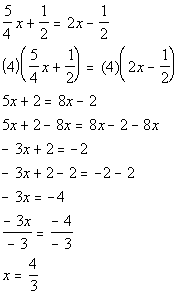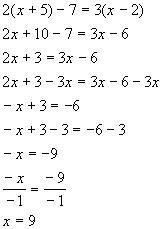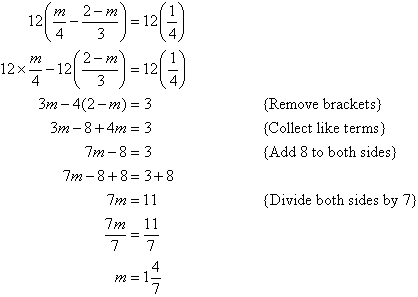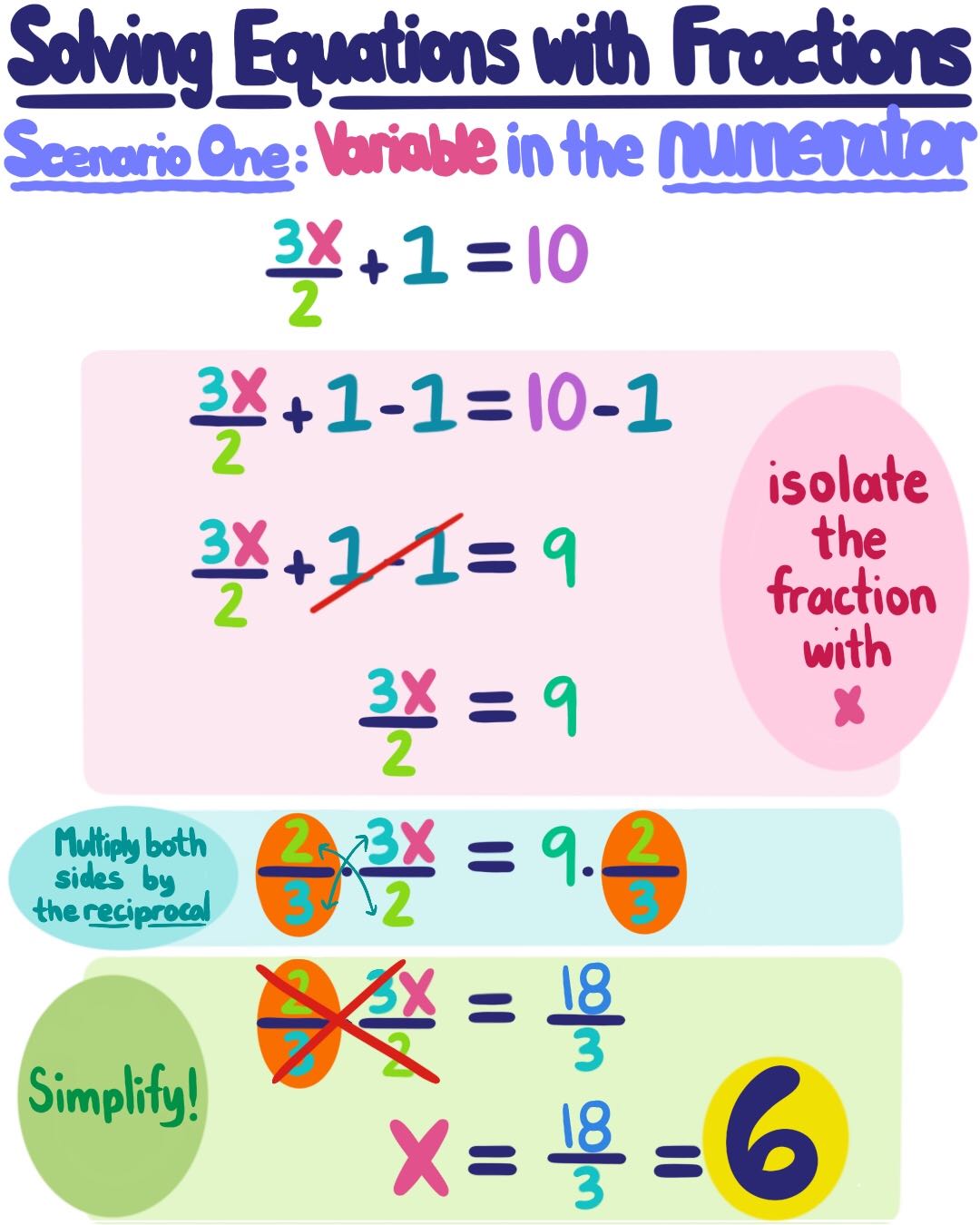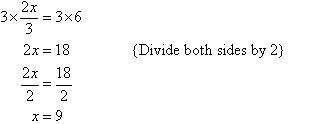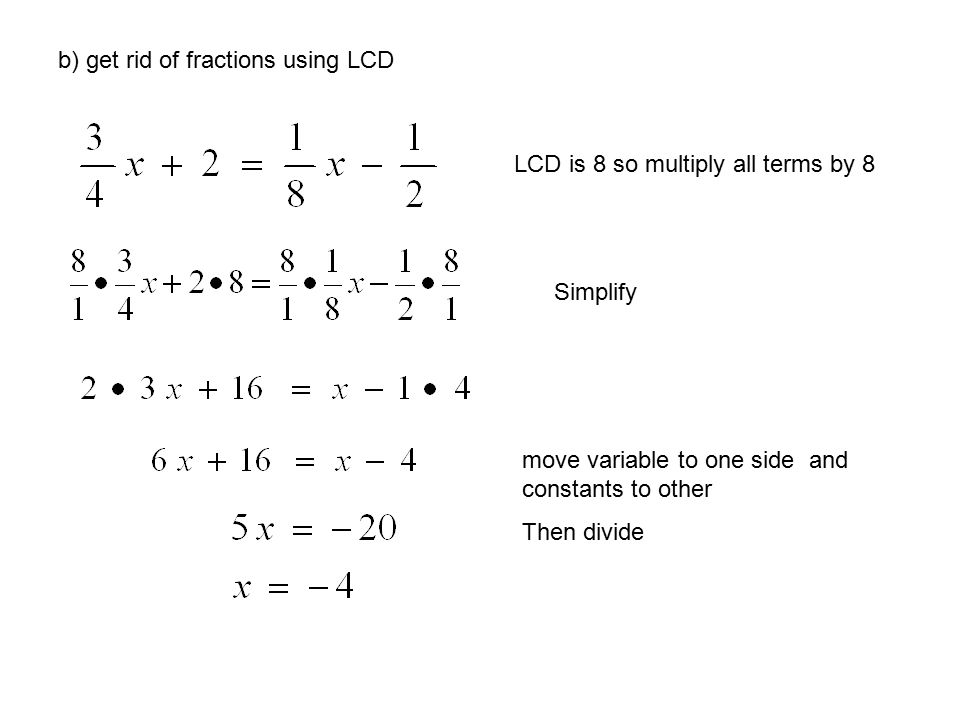Marvelous Info About How To Get Rid Of Fractions In An Equation

The best way to deal with linear equations that involve variables tangled up with fractions is to get rid of the fractions.
How to get rid of fractions in an equation. To clear a fraction from an equation, multiply all of the terms on both sides of the equation by the fraction’s denominator. The number is useful if multiplying eliminates all fractions. To get rid of the fractions, we pick a useful number and multiply both sides of the equation by that number.
Multiply both sides of the equation by that lcd. Now the goal is to obtain y ∗ but the. Clearing the fraction to write an equation with fractions as an equation with just whole numbers
A logarithm is the inverse of an exponent. This video is part of an online course, college algebra. Equations inequalities simultaneous equations system of inequalities polynomials rationales.
Since fractions are another way to write division, and the inverse of divide is to multiply, you remove fractions by. Since they have the same denominator, we will multiply by the denominator and get rid of both fractions. Since fractions are another way to write division, and the inverse of divide is to multiply, you remove fractions by multiplying both sides by the lcd of all of your fractions.
An equation is a statement stating that two values are equal. To get rid of fractions in an equation, multiply every term in the equation by the denominators of all the fractions. This relationship makes it possible to remove logarithms from an.
How to get rid of a fraction in an inequality. For example, to clear the ???2??? 3/4a + 1/3b = 24 multiply each term by 4, then 3a +.

